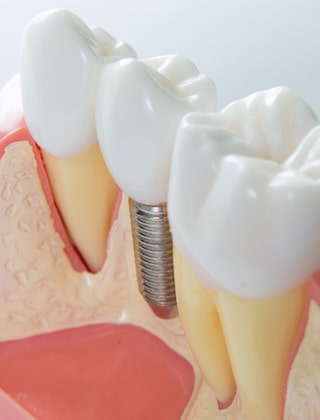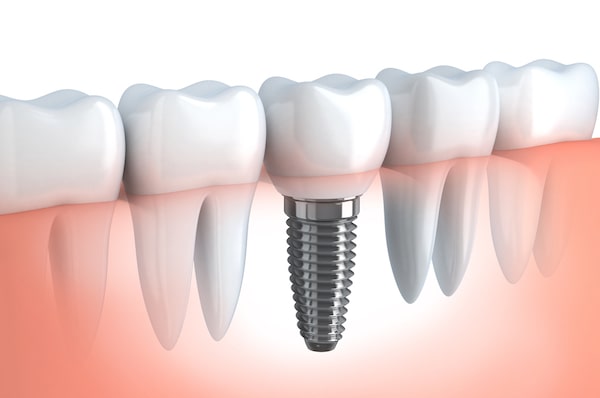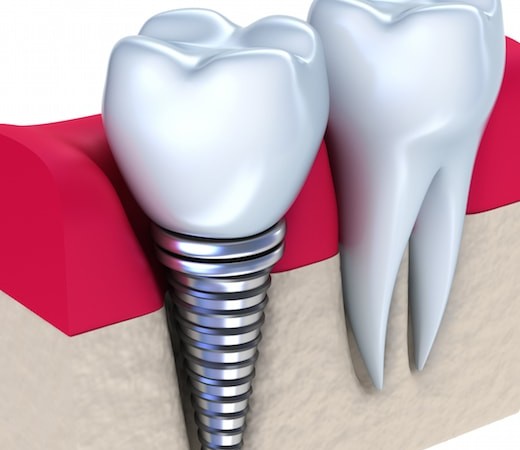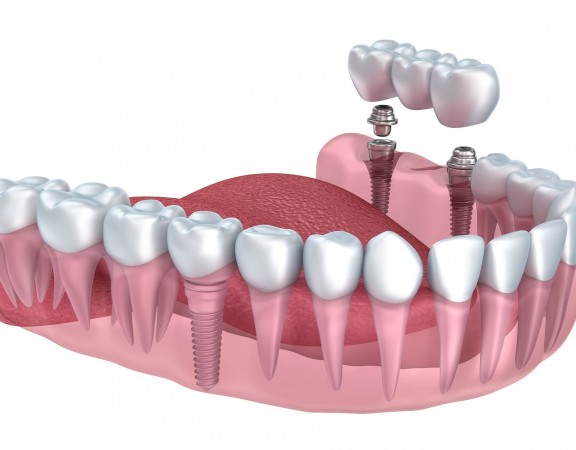In our last blog, we examined how dental implants benefit the mouth. After this blog, we received many questions asking for more information about the dental implants process. A dental implant is a dental restoration that is placed in the mouth in order to replace a missing tooth. The dental implant is essentially a small screw, made of titanium, that is surgically inserted into the jawbone of a patient so it can perform the function of the root of a missing tooth. The top part of the implant will protrude from the bone and it is the area where an artificial dental crown is attached. The implant and the crown work in tandem to equal a tooth. In addition, the dental implant can be used to support a denture or a fixed bridge in the mouth. The implant also fuses to the jawbone, so it is able to provide stability and support for any artificial teeth.
Dental Implants – Who is a Good Candidate?
In general, good candidates for dental implants include someone who has healthy gums or someone who has already lost one or more teeth due to decay, an accident, or some type of congenital anomaly. The patient also needs to have an adequate amount of bone to support the dental implant and their gums need to be healthy enough to support a dental implant.
Dental Implants – How is the Procedure Performed?
 The first step in getting dental implants is undergoing a dental examination of the teeth. If it is determined that a dental implant is needed to address the issue with the mouth, an impression of the area that is being treated will be made to create the dental implant,
The first step in getting dental implants is undergoing a dental examination of the teeth. If it is determined that a dental implant is needed to address the issue with the mouth, an impression of the area that is being treated will be made to create the dental implant,
On the day of the treatment, the tooth will be removed if it is still located where the dental implant will need to be placed. Once the tooth is no longer in the mouth, the dentist will drill a hole in the jawbone so the dental implant can be placed deep in the jawbone where it can work as an artificial root for the new tooth.
As the jawbone heals, the dental implant will fuse with the jawbone. Once the dental implant is stable, an abutment will be placed on top of the implant, so it serves as a connector to the crown. The abutment will be tightened into place so it does not move around and then the dental crown will be attached to the abutment in order to complete the process.
Dental Implants – Advantages of the Treatment
The main advantage of having a dental implant placed in the mouth is that it is anchored to the jawbone and has a good amount of stability. In addition, they are easier to clean than dental bridges or dentures and they have a better look and function than dentures or bridges.
In addition, a dental implant maintains the integrity of the bone that supports it and the implant can be used to replace the entire dentition of a tooth instead of needing a dental implant for each tooth.
Dental Implants – Recovery and Results
There is little downtime required after the placement of dental implants. Patients are able to resume their normal activities after the procedure is completed.
The results from the treatment are felt and seen immediately by the patient. The dental implants should last for at least a decade as long as the post-treatment instructions are followed. They do not decay like natural teeth but developing gum disease can cause their lifespan to shorten. If the gum disease is properly managed and treated, the implant will last a long time. If the gum disease is not treated, the dental implant can eventually be lost by the patient. Proper oral hygiene also helps a dental implant to last in the mouth and enjoy a long lifespan.
Dental Implants – Limitations and Risks of the Procedure
The use of dental implants is limited to patients who do not have an adequate amount of bone structure in the mouth. It is also limited to patients who are willing to have the surgical procedure necessary to place them in the mouth.
Some of the common risks patients will experience after having dental implants put in the mouth include swelling, infection, pain, failure of the implant, chipping or breaking, and bleeding.
Even with the risks and limitations listed above, dental implants are an ideal tooth loss treatment as the loss of a tooth is a common oral health issue experienced by patients. Dental implants replace teeth in the mouth, and they look, function, and feel like natural teeth. Patients who are interested in having a dental implant procedure should schedule a consultation appointment with a dentist who is board-certified and experienced in treating tooth loss by examining the mouth of the patient to determine the reasons for the loss of the tooth. A board-certified dentist can explain to patients what is involved in the procedure, how it is performed, and the type of results they can expect to see after they have dental implants created and placed in the mouth.






